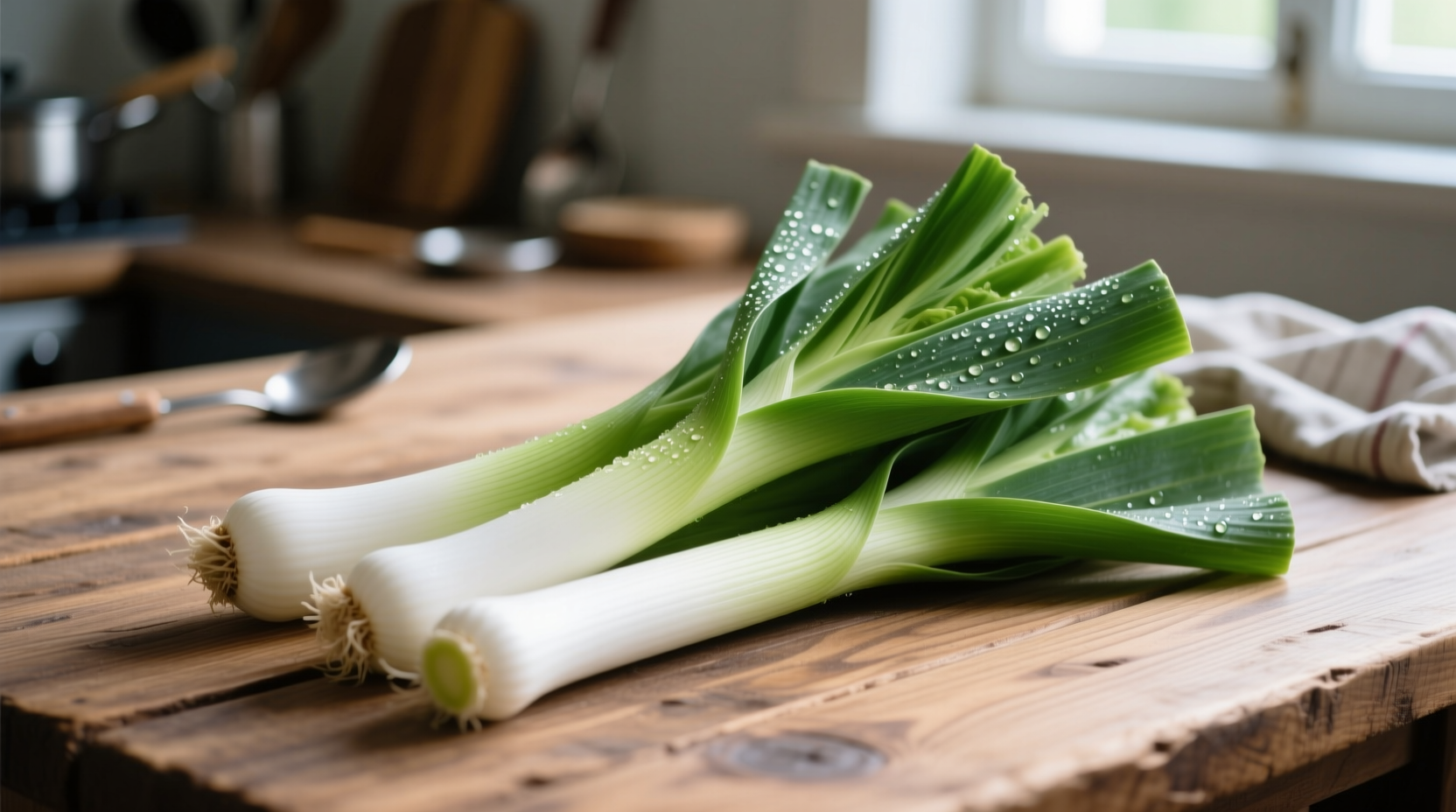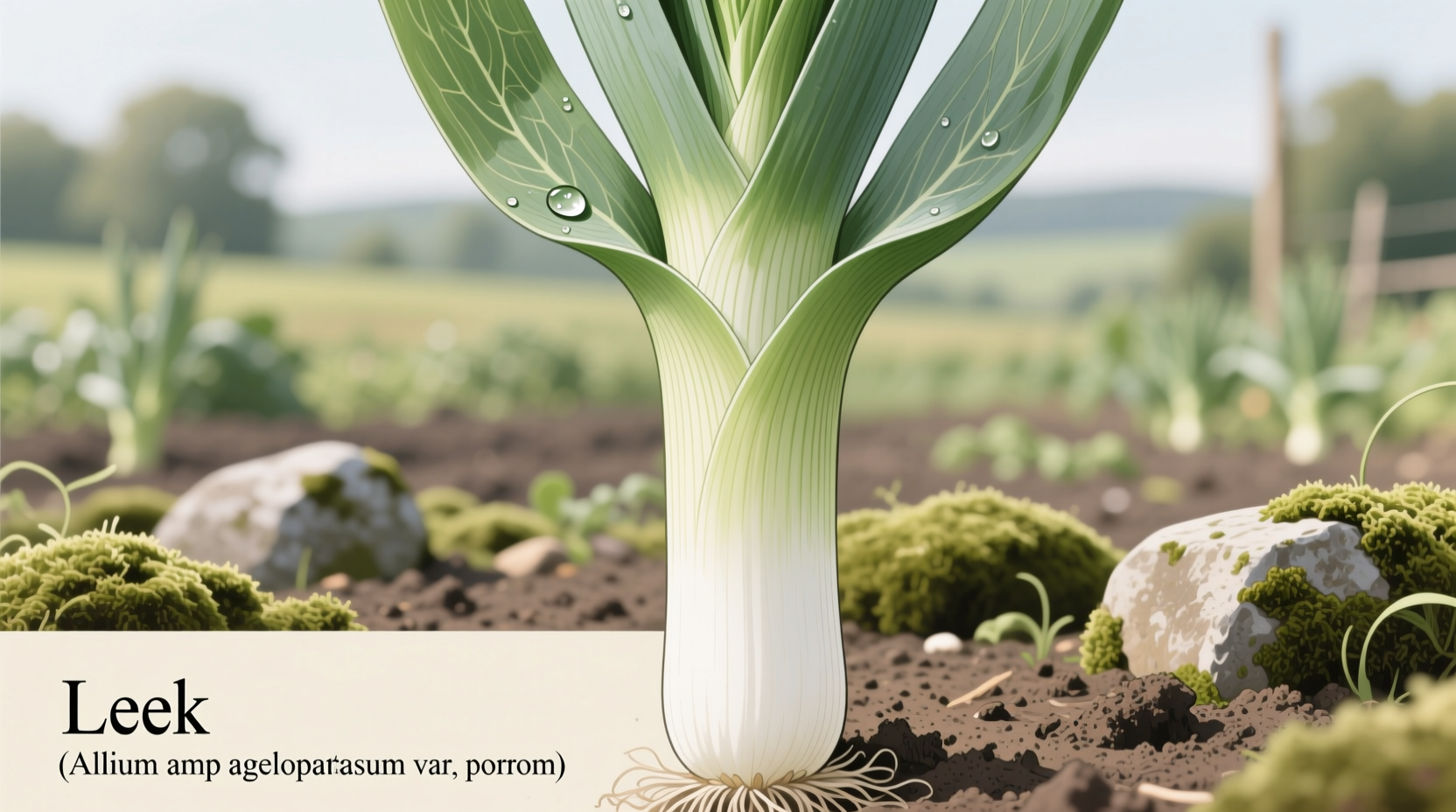What Exactly Is a Leek? Beyond the Basic Definition
When you search what is a leek vegetable, you're likely trying to distinguish this often-misunderstood ingredient from its onion and scallion relatives. Botanically classified as Allium ampeloprasum var. porrum, leeks represent one of the oldest cultivated vegetables, with historical records dating back to ancient Egypt and Rome.
Unlike their bulb-forming cousins, leeks develop an elongated cylindrical stem composed of tightly wrapped leaf sheaths. This unique structure creates distinct flavor zones: the white and light green portions offer mild sweetness, while the dark green tops provide more intense onion-like flavor. The USDA Agricultural Research Service confirms leeks contain significantly less sulfur compounds than onions, explaining their gentler taste profile that won't leave you crying during preparation.
Leek Anatomy: Identifying Edible Parts
Understanding what is a leek vegetable requires recognizing its different components. Many home cooks mistakenly discard valuable portions, not realizing that nearly the entire plant is edible with proper preparation:
| Leek Section | Texture & Flavor | Best Culinary Uses |
|---|---|---|
| White base (3-5cm) | Crisp, mildest flavor | Raw in salads, delicate sauces |
| Light green transition zone | Slightly more pronounced flavor | Soups, quiches, sautés |
| Dark green tops | Stronger, more fibrous | Stocks, braises, slow-cooked dishes |
This structural understanding addresses a common point of confusion when identifying what is a leek vegetable versus similar alliums. Unlike scallions that have hollow tubes, leeks feature solid, layered stems. And while shallots develop clustered bulbs, leeks maintain their distinctive cylindrical shape throughout growth.

Leek Varieties and Seasonal Availability
When exploring what is a leek vegetable, recognizing different varieties helps with selection and usage. The two primary types follow distinct growing patterns:
- Summer leeks (like King Richard): Thin-stemmed, available May-September, require less cooking time
- Winter leeks (such as Blue Solaise): Thicker stems, harvested October-March, develop sweeter flavor after frost exposure
According to Cornell University's Vegetable Growing Guide, winter varieties contain higher sugar content that converts to complex flavors during slow cooking. This explains why French cuisine traditionally features leeks prominently in cooler months - their flavor profile evolves beautifully in dishes like potage Parmentier.
Nutritional Benefits of Leeks
Understanding what is a leek vegetable nutritionally reveals why they've maintained culinary relevance for centuries. Per 100g serving (USDA FoodData Central), leeks provide:
- 59% of daily vitamin K needs - crucial for blood clotting and bone health
- 26% of vitamin A - supporting vision and immune function
- Significant folate and manganese
- Only 31 calories with 1.5g protein and 6g carbohydrates
Research published in the Journal of Agricultural and Food Chemistry confirms leeks contain unique organosulfur compounds that may support cardiovascular health differently than onions. Their lower pungency correlates with different sulfur compound ratios, making them more digestible for many people who struggle with other alliums.
Practical Guide to Selecting and Using Leeks
Now that you understand what is a leek vegetable, here's how to incorporate them effectively:
Selection Tips
Choose leeks with crisp, bright green leaves and firm white stems. Avoid yellowing or flowering tops, which indicate over-maturity. The ideal diameter ranges from pencil-thin to 2 inches - thicker leeks require longer cooking but offer more substantial texture.
Cleaning Technique
Leeks famously trap soil between layers. The most effective cleaning method: slice lengthwise through the root end (keeping root intact), submerge in cold water, and swish to release dirt. Change water until clear. This addresses the #1 frustration home cooks face with leeks.
Culinary Applications
Maximize your understanding of what is a leek vegetable through proper usage:
- Raw: Only the white portion in fine julienne for salads
- Sweated: Cooked slowly in butter until translucent (never browned) as flavor base
- Braised: Whole small leeks with stock and herbs
- Grilled: Halved lengthwise with olive oil for smoky flavor
Professional chefs note that leeks' mild flavor makes them ideal for dishes where you want onion essence without sharpness - think creamy soups, delicate sauces, and vegetable tarts where stronger alliums would dominate.
Common Questions About Leeks
Can you eat the green part of leeks?
Yes, the dark green portions are completely edible but more fibrous and intensely flavored. They work best when finely chopped for stocks, soups, or slow-cooked dishes where long cooking softens their texture. Save them for flavor bases rather than raw applications.
How do leeks differ from green onions?
Leeks have solid stems with layered sheaths while green onions have hollow tubes. Leeks offer milder, sweeter flavor throughout with no distinct bulb, whereas green onions have a stronger onion flavor concentrated in the white bulb portion. Leeks require more thorough cleaning due to their layered structure trapping more soil.
What's the best way to store fresh leeks?
Store unwashed leeks upright in the refrigerator with roots submerged in an inch of water (like cut flowers), covered loosely with a plastic bag. This maintains crispness for 10-14 days. Alternatively, wrap in slightly damp paper towels inside a perforated plastic bag for 7-10 days of freshness.
Why do recipes specify using only the white part of leeks?
The white portion has the mildest flavor and most tender texture, making it suitable for raw applications or dishes where delicate onion flavor is desired without fibrous texture. The green parts contain more cellulose and stronger flavor, which can overwhelm subtle dishes but work well in heartier preparations.











 浙公网安备
33010002000092号
浙公网安备
33010002000092号 浙B2-20120091-4
浙B2-20120091-4